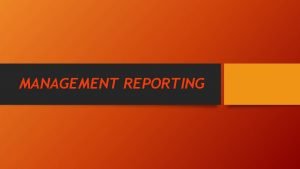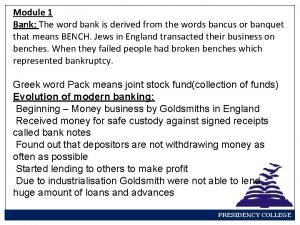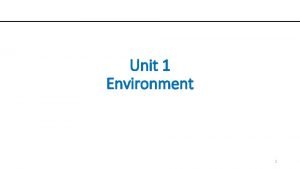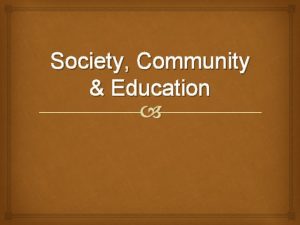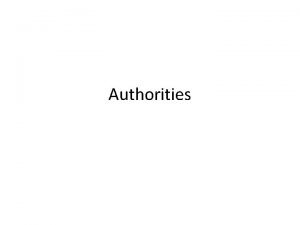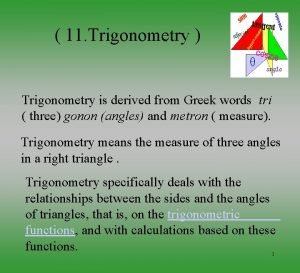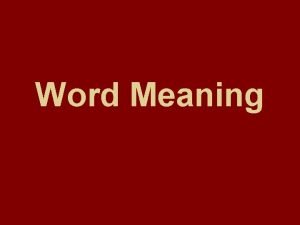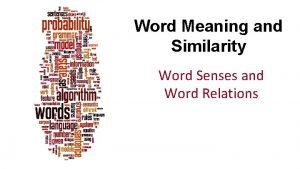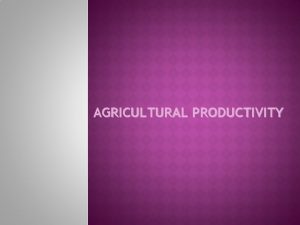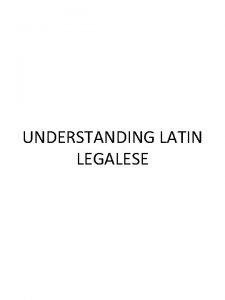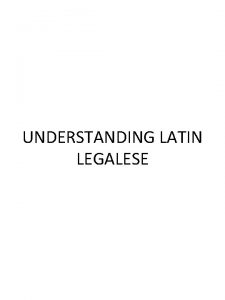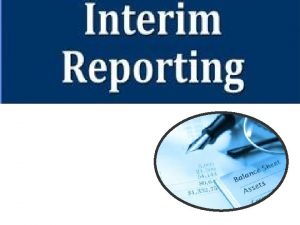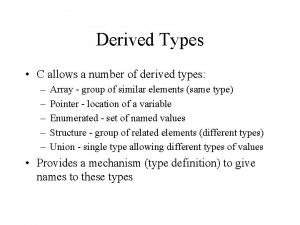MANAGEMENT REPORTING MEANING The word REPORT is derived





















- Slides: 21

MANAGEMENT REPORTING

MEANING The word REPORT is derived from the Latin word portare which means to carry. So report is the document which carries the information. The word Report consists of two parts- RE+ PORT. The meaning of word RE is again and port means to carry. DEFINITION: ACCORDING TO G. R. Terry, Report is “ a written statement based on collection of facts, events and opinions and usually expreses a summarised and interpretative value of this information. It may deal with past accompalishments, present conditions or probable future development”.

PURPOSE OF REPORTS Means of Serve as record communication To develop public Basis to measure relations performance Legal requirements Control purposes

MANAGEMENT REPORTING • The process of providing information to the management is known as Management Reporting. • According to Anthony and Reece, “ Reports on what has happened in a business, are useful for two general purposes which may be called information and control, respectively. ”

METHODS OF REPORTING Graphic reporting Written reporting Oral reporting

Written Reporting Tabulated Formal financial statements Accounting ratios

Graphic reporting Oral reporting

REQUIREMENTS OF A GOOD REPORT 1. Good form and content. 2. Simplicity 3. Promptness 4. Relevancy 5. Consistency 6. Camparability 7. Controllability 8. Cost consideration 9. Frequency of reports

KINDS OF REPORTS According to object According to nature According to period According to function

According to Object • External reports: These reports are meant for persons outside the business. Examples: Income Statement and Balance Sheet.

• Internal reports: These are those reports which are meant for different levels of management. Internal reports are not public documents and they are not expected to conform to any standards.

According to nature • Enterprise reports: These reports are prepared for the concern as a whole. It may include income statement, employment reports etc. • Control reports: Control reports deal with two aspects. One aspect relates to the personal performance and the second aspect deals with the economic performance. The first type of reports are reported to judge the performance of managers and heads of responsibility centres. The second type of reports show well the centers has faired as an economic entity. • Investigative reports: These reports are intermittent and are prepared only when situations arise.

ACCORDING TO PERIOD • Routine reports: These are prepared about day to day working of the concern. They are periodically sent to various levels of management. So far as the timing is concerned they may be sent daily, weekly, monthly or quarterly. Routine reports relates to sales information, production, capital expenditure, market trends etc. • Special reports: The management may confront some difficulties routine reports may not give sufficient information to tackle these situations. Under such circumstances, special reports are prepared. These reports are prepared according to the need of situation.

ACCORDING TO FUNCTION • Operating reports. These reports provide information about operations of the concern. Operating reports consist of – • Control reports • Information reports • Financial reports : These reports provide information about the financial position of the concern on specific dates or movement of finances during a specific period. Balance sheet and other subsidiary reports are examples of static reports ; cash flow, fund flow statement are examples of dynamic reports.

LEVELS OF MANAGEMENT Reports for top level includes periodic reports of profit and loss, reports about cost of production, statement on research &development. Reports of middle level includes reports related to production, sales, purchase, finance etc. Reports of lower level include labour utilization reports, scrap reports, actually shop expenses against budgeted expenses maintenance costs reports etc.

GENERAL PRINCIPLES OF GOOD REPORTING SYSTEM 1. Proper flow of information 2. Proper timing 3. Accurate information 4. Basis of comparison 5. Reports should be clear and simple 6. Cost 7. Evaluation of responsibilities

PROCESS OF REPORT WRITING Deciding the nature and purpose of the report Planning structure of the report Drafting of a report

1. DECIDING THE NATURE AND PURPOSE OF THE REPORT

2. PLANNING STRUCTURE OF THE REPORT • • Heading Address Contents Terms of reference or introduction Body of the report Recommendations Reference and appendices Signature

3. DRAFTING OF A REPORT • Collection of data and it’s analysis • Format of a report • Writing of report • Presentation of report

With Inputs from : Amanjot Kaur M. Com Sem-I 3045
 The word report is derived from latin word
The word report is derived from latin word The word audit has been derived from the latin word *
The word audit has been derived from the latin word * Do f
Do f The term precis is derived from
The term precis is derived from The word bank is derived from latin word
The word bank is derived from latin word The two greek words of the word geometry are geo and metro
The two greek words of the word geometry are geo and metro Greek words for photography
Greek words for photography Forensic scientist definition
Forensic scientist definition Latin word adventus
Latin word adventus Greek word of physics
Greek word of physics Litera meaning in latin
Litera meaning in latin Horticulture branches
Horticulture branches Contributors to our present gymnastics program
Contributors to our present gymnastics program Logia meaning in technology
Logia meaning in technology What is scientia
What is scientia Environment derived from which word
Environment derived from which word Communities in society
Communities in society Magnet
Magnet Authority is derived from
Authority is derived from Trigonometry comes from the greek words
Trigonometry comes from the greek words Conditional evidence
Conditional evidence Brazen sonnet
Brazen sonnet
